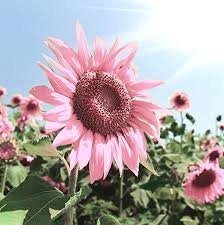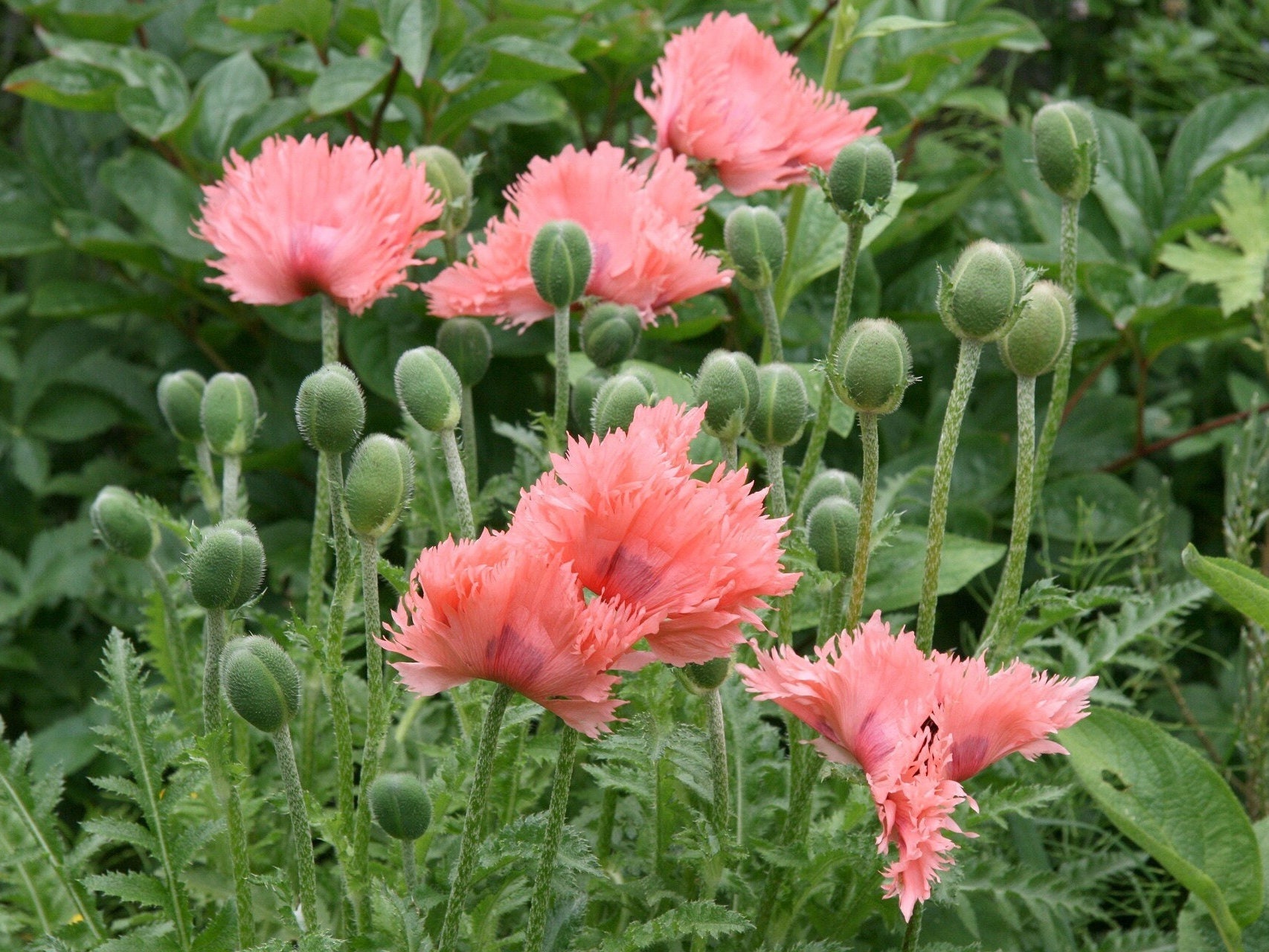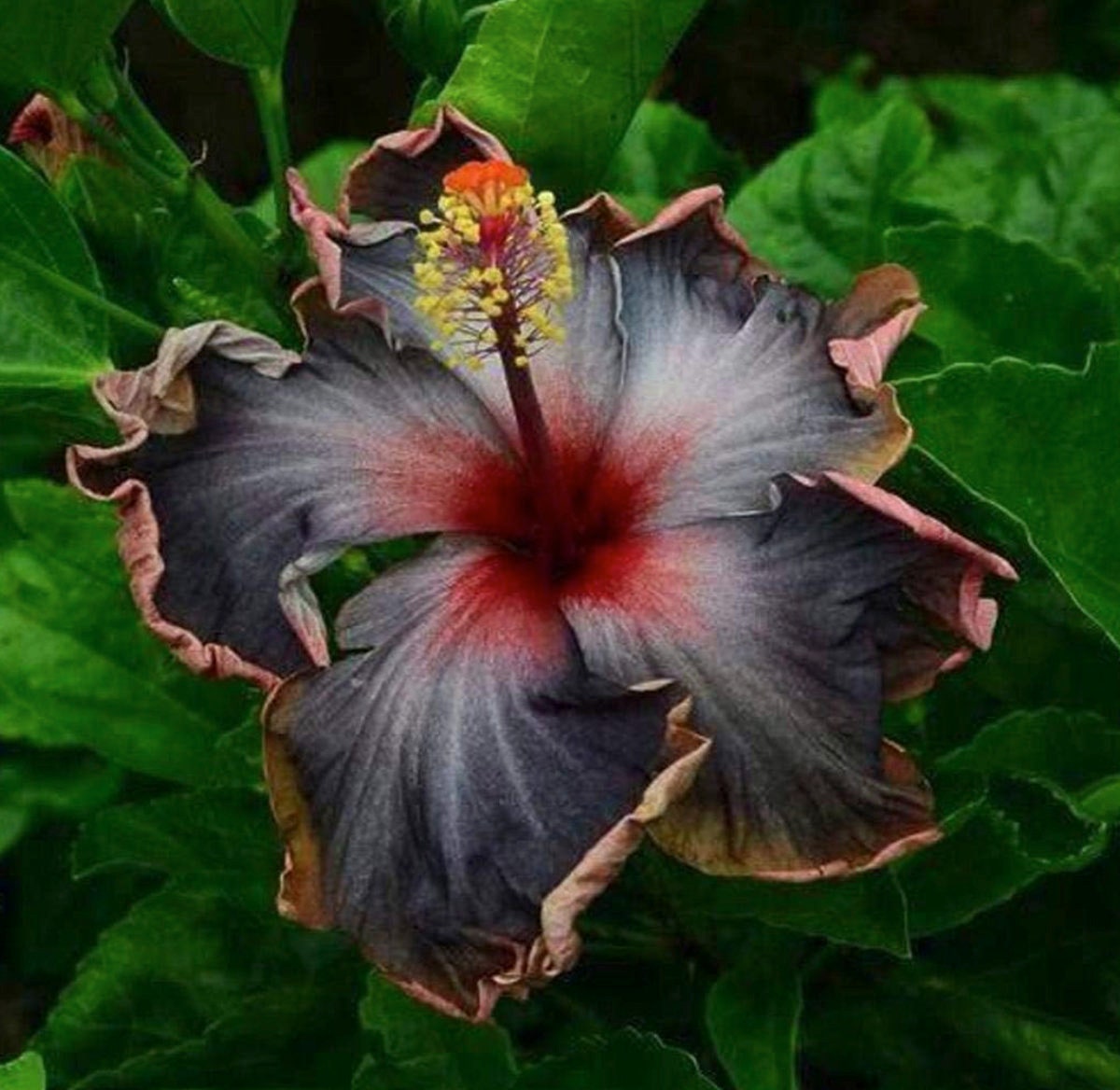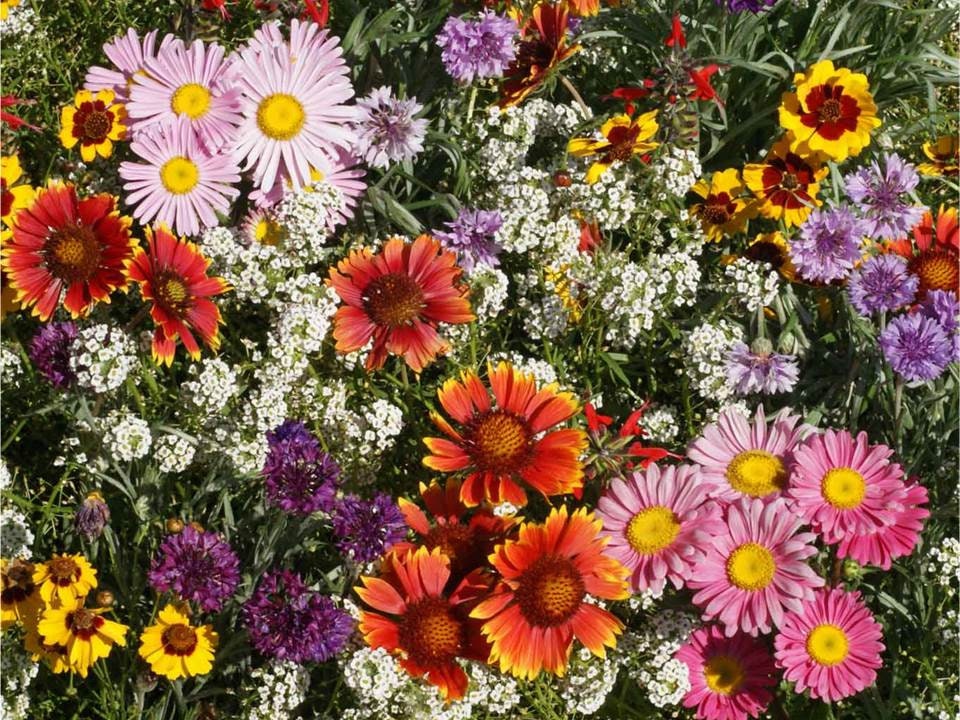Don't miss our holiday offer - up to 50% OFF!
100+ Bulk pack Black Oil Pink Sunflower Seeds Plants Garden Planting Colorful Rare organic
د.م.18.99
Midnight Oil Pink Sunflower Seeds Plants Garden Planting Colorful Rare Bonsai US. Shipped with USPS. Stamped envelope.
Shipped with USPS stamped envelope…. Tracking can be added for additional $3.25. Contact me with buyers note or email before purchase.
Pink is Hybrid and not guaranteed 100% money back if not satisfied regardless of bloom color.Full sun: 6 to 8 hours a day is ideal in a location protected from the wind.
Soil: rich, well-drained soil.
Sow seeds: after risk of frost has passed.
Okay soil temperature: 55°F (13°C) or warmer.
Ideal soil temperature: 70° to 75°F (21° to 25°C).
Sowing instructions: check your seed packet.
Usually 1-inch deep, spacing seeds 6 to 36 inches, depending on variety.
Germination: 2 to 10 days.
Days to maturity: 80 to 120 days.
Container growing: yes, best for smaller, dwarf varieties.
Fertilizer: amend soil with good compost. Can also use granular, slow-release fertilizer as directed on product label.
Growing zones: Sunflowers are native to North America and can be grown as annuals everywhere from Alaska to Mexico.
Sizes range from dwarf types (1 to 2-feet tall) to mammoths (8 to 15 feet). The world record for sunflower height is currently 30 feet!
Flower sizes can be a few inches and up to 20-inches in diameter.
Flower colors: white, pale yellow, yellow, bright yellow, orange, bronze, rust, dark red, and bi-colored varieties.
Appearance and texture: long petals, short petals, fluffy, elongated….
Formation: single flower heads, multi-flower heads.
Cut flowers: there are pollen-free types intended for cut flowers.
Seeds: check the seed packet to know whether the plant will produce seeds and if they can be saved for sowing. Some hybrids are sterile.
If you live in a cold climate, choose varieties that grow from seed to maturity in the number of days available between last frost in spring and first frost in fall.
Most take between 50 and 120 days, but there are exceptions.
With seeds selected that you know have time to go from seed to harvest in your growing season, you can sow the seeds as soon as the risk of frost has passed for the season.
If you have time, you will get the best germination rates if you wait until soil temperatures are consistently 70° to 75°F (21° to 25°C).
But, for many of us, we need to sow sooner, and you can get by with soil temperatures of 55°F (13°C) or warmer—just be sure to protect them from critters and cover them if temperatures drop.
I’ve had late frosts after sowing but the sunflower seeds survived fine because they had not sprouted yet. If you expect a frost after sowing, cover the soil with a blanket for the night (and don’t forget to remove it in the morning).
You can also start sunflower seeds indoor in small containers for transplanting outdoors, although it is preferable to sow them directly outdoors if possible Wait until your young plants have at least two sets of true leaves and a sturdy stem before transplanting. The stronger the young plant, the better your odds.
unflower seeds average a germination rate of 75% so 3 out of every 4 should sprout.
Generally, sunflower seeds are sown 1-inch deep, spacing the seeds 6 to 36-inches apart, depending on the variety.
You can also sow several seeds close together and remove the weaker ones after a few weeks. This is called ‘thinning out’.
Spacing Examples
In general, a mammoth (tall, giant) sunflower does best in good quality soil with no other plants within 24-inches (two feet) in any direction (a four-foot diameter circle of growing space).
Smaller varieties of sunflowers are more forgiving, with some doing fine with just 6-inches of growing space (in all directions). But more is better. The better the resources, the larger the plant can grow.
Protect Your Seeds
After sowing, cover the soil with 1-2 inches of mulch on top of the garden soil to help keep moisture in.
Protect newly planted seeds with cloches, dollar store mesh waste baskets, or anything that will keep birds, squirrels and mice from digging up the seeds or slugs from eating the seedlings.
If you do cover your seeds/seedlings, be sure to check on them so they have water, air flow, and light (after germinating).
100% Moneyback if not happy.Full sun: 6 to 8 hours a day is ideal in a location protected from the wind.
Soil: rich, well-drained soil.
Sow seeds: after risk of frost has passed.
Okay soil temperature: 55°F (13°C) or warmer.
Ideal soil temperature: 70° to 75°F (21° to 25°C).
Sowing instructions: check your seed packet.
Usually 1-inch deep, spacing seeds 6 to 36 inches, depending on variety.
Germination: 2 to 10 days.
Days to maturity: 80 to 120 days.
Container growing: yes, best for smaller, dwarf varieties.
Fertilizer: amend soil with good compost. Can also use granular, slow-release fertilizer as directed on product label.
Growing zones: Sunflowers are native to North America and can be grown as annuals everywhere from Alaska to Mexico.
Sizes range from dwarf types (1 to 2-feet tall) to mammoths (8 to 15 feet). The world record for sunflower height is currently 30 feet!
Flower sizes can be a few inches and up to 20-inches in diameter.
Flower colors: white, pale yellow, yellow, bright yellow, orange, bronze, rust, dark red, and bi-colored varieties.
Appearance and texture: long petals, short petals, fluffy, elongated….
Formation: single flower heads, multi-flower heads.
Cut flowers: there are pollen-free types intended for cut flowers.
Seeds: check the seed packet to know whether the plant will produce seeds and if they can be saved for sowing. Some hybrids are sterile.
If you live in a cold climate, choose varieties that grow from seed to maturity in the number of days available between last frost in spring and first frost in fall.
Most take between 50 and 120 days, but there are exceptions.
With seeds selected that you know have time to go from seed to harvest in your growing season, you can sow the seeds as soon as the risk of frost has passed for the season.
If you have time, you will get the best germination rates if you wait until soil temperatures are consistently 70° to 75°F (21° to 25°C).
But, for many of us, we need to sow sooner, and you can get by with soil temperatures of 55°F (13°C) or warmer—just be sure to protect them from critters and cover them if temperatures drop.
I’ve had late frosts after sowing but the sunflower seeds survived fine because they had not sprouted yet. If you expect a frost after sowing, cover the soil with a blanket for the night (and don’t forget to remove it in the morning).
You can also start sunflower seeds indoor in small containers for transplanting outdoors, although it is preferable to sow them directly outdoors if possible Wait until your young plants have at least two sets of true leaves and a sturdy stem before transplanting. The stronger the young plant, the better your odds.
unflower seeds average a germination rate of 75% so 3 out of every 4 should sprout.
Generally, sunflower seeds are sown 1-inch deep, spacing the seeds 6 to 36-inches apart, depending on the variety.
You can also sow several seeds close together and remove the weaker ones after a few weeks. This is called ‘thinning out’.
Spacing Examples
In general, a mammoth (tall, giant) sunflower does best in good quality soil with no other plants within 24-inches (two feet) in any direction (a four-foot diameter circle of growing space).
Smaller varieties of sunflowers are more forgiving, with some doing fine with just 6-inches of growing space (in all directions). But more is better. The better the resources, the larger the plant can grow.
Protect Your Seeds
After sowing, cover the soil with 1-2 inches of mulch on top of the garden soil to help keep moisture in.
Protect newly planted seeds with cloches, dollar store mesh waste baskets, or anything that will keep birds, squirrels and mice from digging up the seeds or slugs from eating the seedlings.
If you do cover your seeds/seedlings, be sure to check on them so they have water, air flow, and light (after germinating).






Ileen Lind –
Looking forward to growing the seeds. I shared the seeds with 3 people. Thank you
colleen reilly –
I’m so excited to plant these seeds and see what comes up!! Thank you!
Kerry McMullen –
Great service! Seeds look good and healthy, can’t wait to watch them grow!❤️🌱
Jacqueline Taylor –
Seeds going to an avid gardener. Hope they are beautiful.